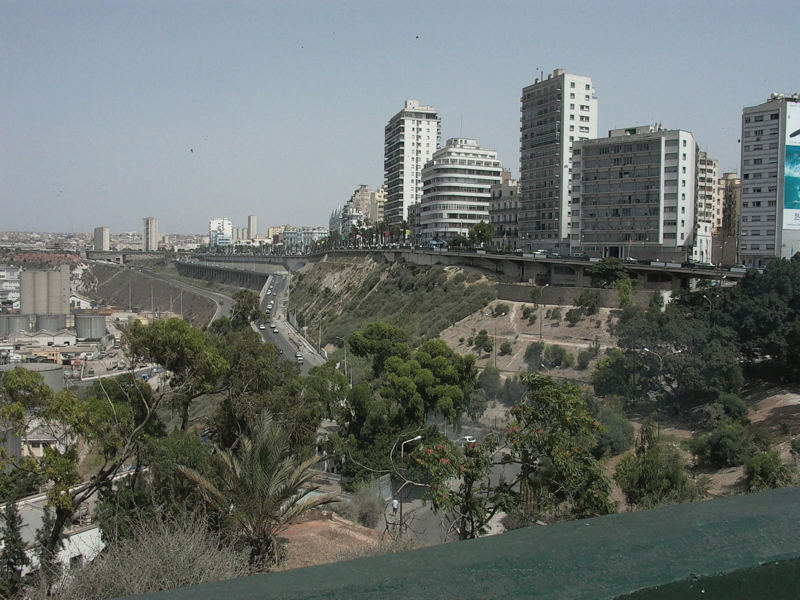Executive talked to Hani Hamid, Marketing Manager at the National Bank of Umm Al Qaiwain, and Yousef Padganeh, Head of the Basel II Project at Bank Saderat Iran in Dubai, about the outlook for the UAE banking sector this year.
E Is the UAE banking market as competitive as it could be? Specifically, do you expect greater competition this year on prices for core banking products?
NBUQ: Definitely. Prices on interest will vary from bank to bank, so the sector will become more competitive. The sector will become more competitive this year—there are now 52 banks in the UAE.
Bank Saderat: Yes, there is growing competition. The UAE market is highly competitive and will become more competitive because the people are trying to find new markets.
E Is the regulatory environment and enforcement of regulations fair and equitable for all banks in the UAE?
NBUQ: Yes, I think it is—but the UAE needs a credit bureau, which has been talked about for a long time.
Bank Saderat: Yes, it is fair.
E Will the UAE be able to defend its role as leading banking hub in the Gulf against the competition from Bahrain Financial Harbor and Qatar Financial Center? Does the function as banking hub benefit local banks or are there disadvantages?
NBUQ: I think the UAE is one of the strongest banking hubs, so then it will be able to compete. It is competing with the Middle East, not just the Gulf. Local banks compete differently from international banks—a different environment and customers—so they have the edge on international banks for local and Arabic-speaking customers.
Bank Saderat: Yes, if you compare it to a few years ago you will see more and more companies and organizations are coming to the UAE, to the DISE. If we look at the whole Gulf region, the market share will decrease as more banking come to Dubai. Local banks will benefit as we [international banks] are limited—we cannot have more than eight branches, but foreign banks will try to have more branches. Local branches will open more and be more active, so they will benefit.
E Should regulators modify their approach to the licensing of local and/or foreign banks in the UAE?
NBUQ: It could be possible, as I think there are too many banks in the UAE, even foreign banks. UAE has an open market so anybody can come.
Bank Saderat: I am not aware of this. Regulators are supporting local banks more than international banks.
E Is the sector ripe for mergers? Should regulatory authorities do more to encourage consolidation?
NBUQ: I think it is the right time for some merging. With all the money banks made last year, and in 2005 due to the stock market, there was talk before then for mergers, but if the market stays the way it is, or there is a drop in the market, mergers could happen.
Bank Saderat: One thing I am seeing is that Emirates groups will merge. For example, we are seeing new banks, but state banks will not like mergers.
E Are UAE banks valued adequately in the Abu Dhabi and Dubai stock markets? Are 2006 earnings growth and performance reflected in recent share price developments?
NBUQ: In terms of profit it has affected them, but in terms of value at the right level. Looking at the market it is good and healthy. I think the stock exchange will grow this year.
Bank Saderat: The price of the banking stock depends on construction. I think it depends on that area rather than banking. For instance, if Emaar goes up, the National Bank of Dubai will go up.
E UAE banks have been looking east and west for cross-border expansion opportunities. Which markets are the most attractive for expansion in 2007?
NBUQ: I would say Iraq, but that’s not a good market right now. Africa is showing it is a competing market; Sudan and Libya have shown they are good markets. Egypt is also a good market, and there are some international banks are there. Qatar definitely a good market and competitive—a lot of banks are trying to open there, and in Bahrain. Syria is good, but tere are too many rules and regulations.
Bank Saderat: UAE banks are opening branches in Pakistan and India, and want immediate customers living in Dubai. Some 55% of workers in the UAE are from Pakistan, India and Bangladesh, so there is demand, particularly for retail banking. The other factor is based on trading, where they have the most trade. Some of these investors are looking for property investment so that is why they are opening in Morocco and North Africa. Banks are also trying to get into Iran and Iraq.
E What obstacles do banks find most challenging when pursuing cross-border expansion, and are some of these obstacles higher for UAE banks than for international competitors in the same markets (e.g. regulatory requirements in other markets, competition with European banks in countries like Egypt, acquisition of skilled staff, integration of corporate cultures in takeovers)?
NBUQ: In Egypt, rules are the obstacle, along with money transfers and exchanges. Sudan and Libya are much more open, but politically Sudan is not stable. Libya is an open market.
Bank Saderat: The first problem is regulatory. We should know what the rules are—and then new competition in the market. I also think they should have a good idea of customer needs and wants as they will differ from the UAE. For instance, just now regulations for foreign banks requires UAE-employees, so recruiting can be a problem.
E Do staff shortages create problems for domestic growth of the bank?
NBUQ: It definitely affects a bank’s growth. All banks have been affected by stock markets, and I don’t think there is a problem, but staff exchanges between banks are a problem, which affects banks moving ahead.
Bank Saderat: Getting staff in the UAE is a problem as there aren’t enough people. We may find a few post-grads, but they have no experience. In the long term it should be better.
E Is the growth of Islamic banking the future of UAE banking?
NBUQ: I think it is the future of everywhere, even the UK and now the US. It is a trend they follow, like changing clothes. They have used credit cards, car loans, and now trying Islamic banking. We have already started that here.
Bank Saderat: Islamic bank is rising. HSBC started and others too, so there is a market.
E Do you expect shifts in the structure and importance of corporate banking? Where are the best options to expand and/or diversify financing portfolios for manufacturing ventures and corporate borrowers?
NBUQ: Banks are doing corporate banking but retail banking is a lot more profitable, but I think they should change their policies, as the commercial banking is moving fast and changing, and it is a good banking product.
Bank Saderat: Diversified portfolios will minimize risk, so there will be a shift. We have corporate banking and the target market is changing. Nowadays competition is high so we need to find new markets.
E What are the main challenges in retail operations? Given the rapid changes in costs of living and the scenarios in the housing market, what can banks do to keep their consumer loan portfolios profitable and lending growth sustainable?
NBUQ: In retailing, the most popular products are mortgages, and banks are looking into priority banking due to customers having more wealth. We have 40-50,000 millionaires in the UAE, out of a population of 4 million, so priority banking will make some growth for banks and they are looking at this. Mortgaging is also booming.
Bank Saderat: The main challenge here is that the cost of living is rising. If banks can provide home loans they will benefit, and then what will happen is that people will try and invest in houses. Second, credit card users are rising, so savings will decrease. Loans will increase and repayment times. High rates of loans will also increase. Banks are now offering Dh120,000 loans.
E Could the consumer lending and housing loan segments face problems from rising loan default levels in 2007? What mechanisms will banks use to avert the overheating of the retail lending market?
NBUQ: There have not been many defaults in the market—I have not heard of that many, more in cars than houses. It is a new loan through banks, so not many defaults, and people just sell out the deed. Definitely prices have hiked, and I think the surplus will drop. In three years, you might see more defaults.
Bank Saderat: Default will increase, particularly for homes. We should look at the political situation of the region, and consider that there has been an abnormal increase in property prices. There are also delays in construction times, and people still have to pay off loans. Salaries are also not increasing in relation to rising costs, with housing rising 100%. The onus should be on the government, as banks want profit. If the government increases salaries, that may help.









